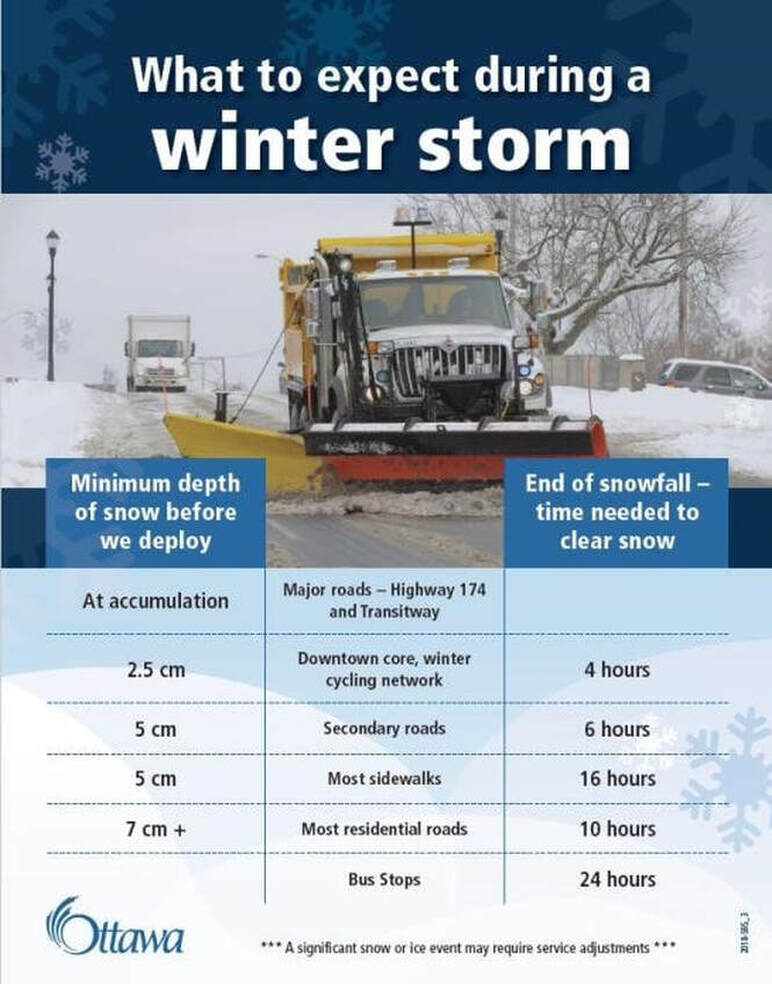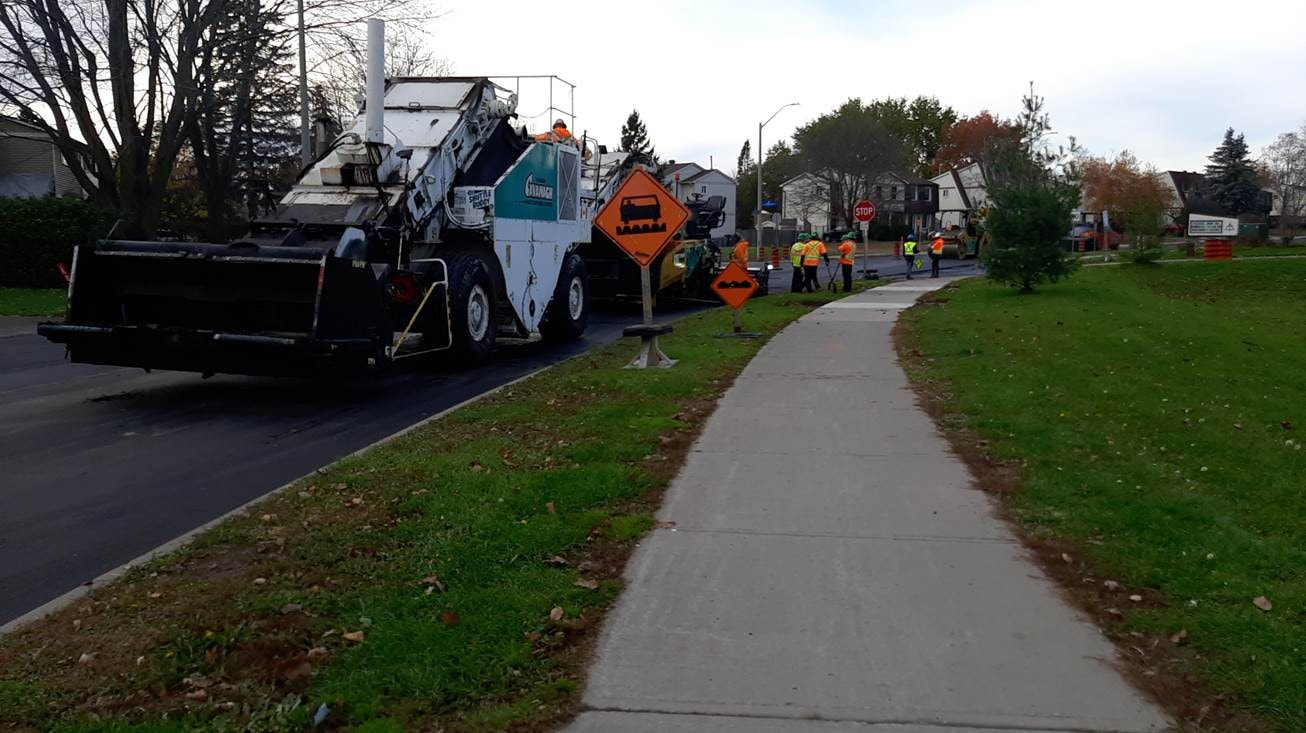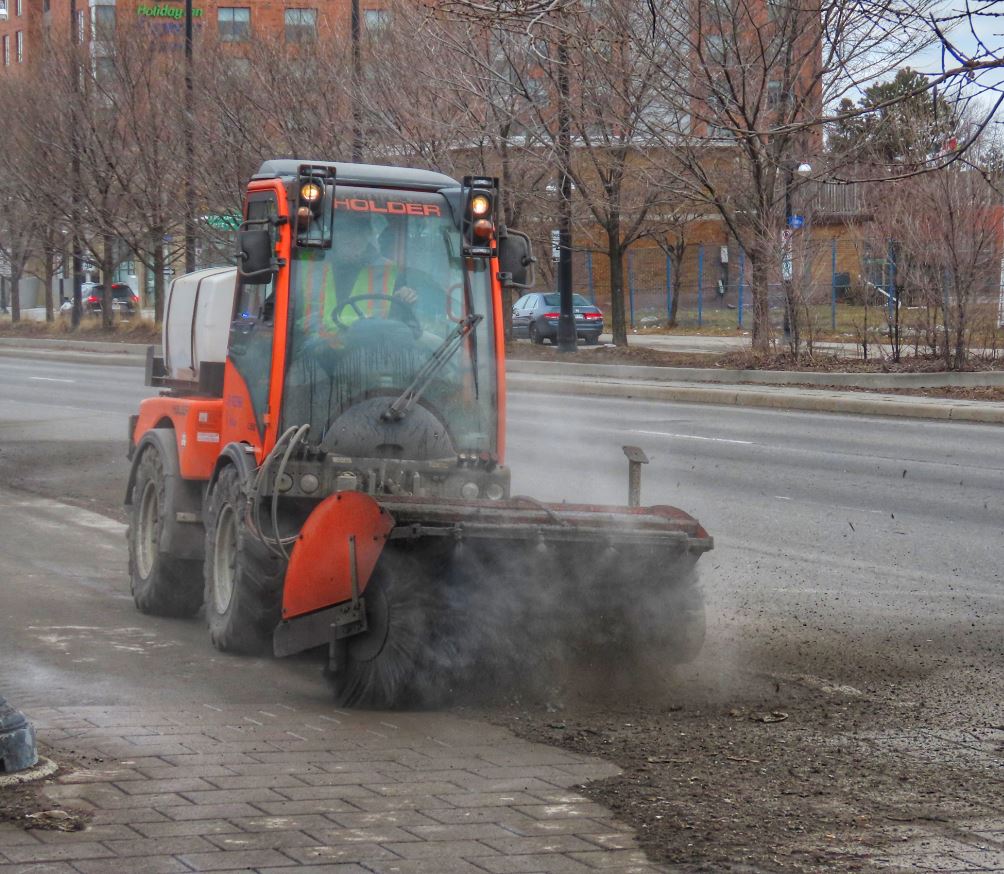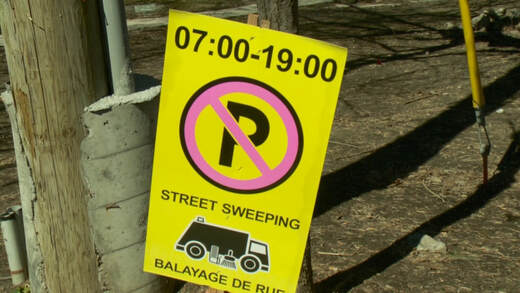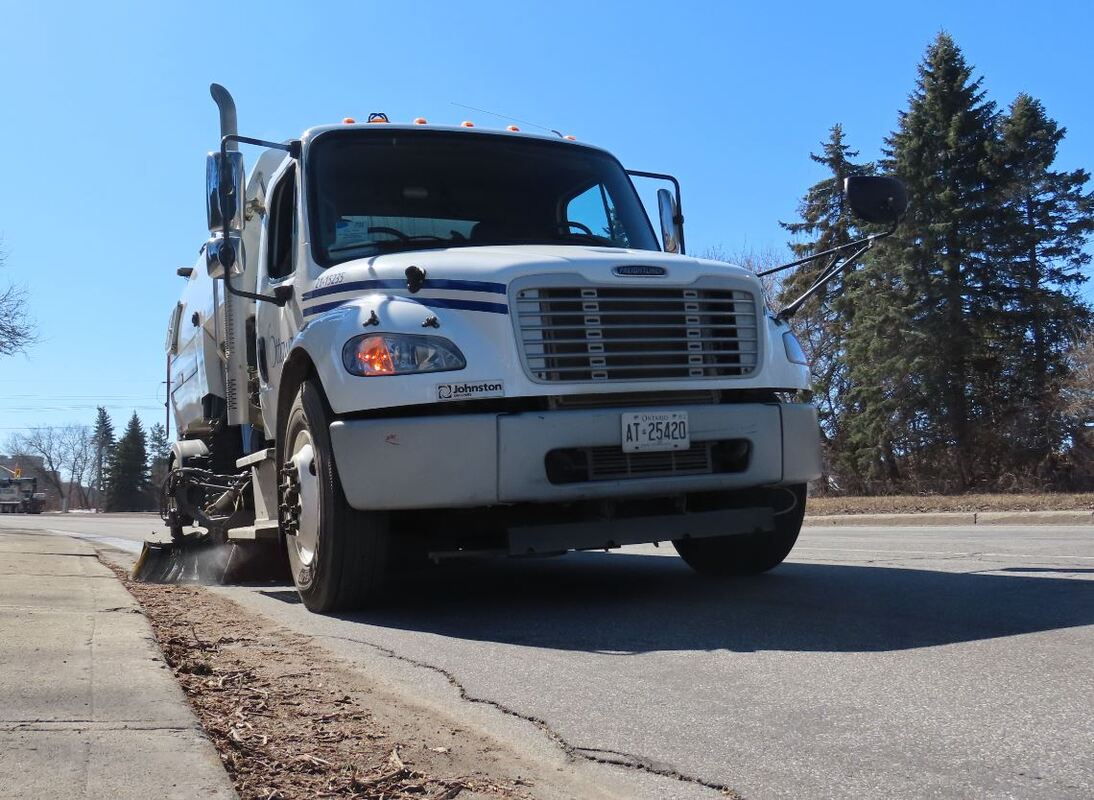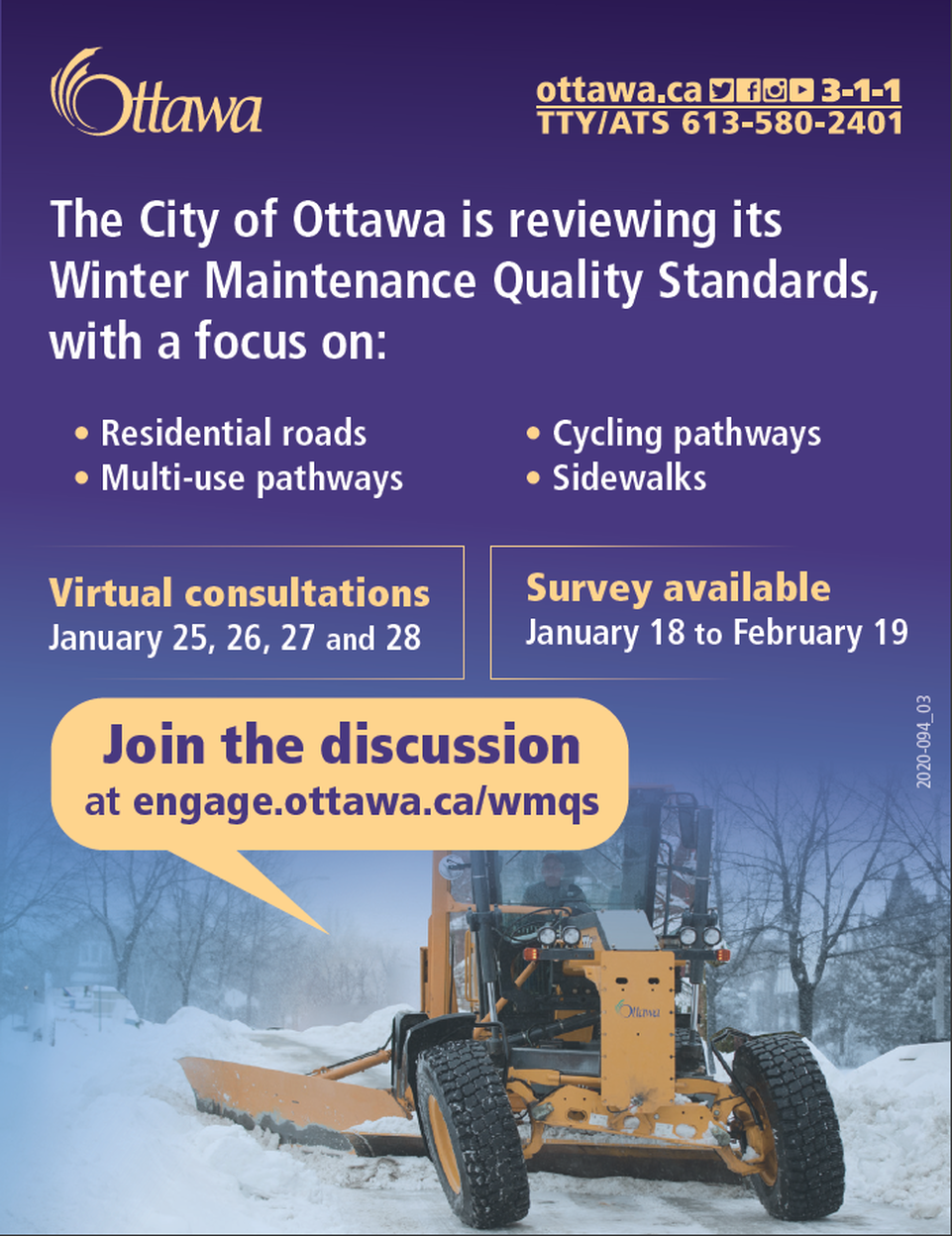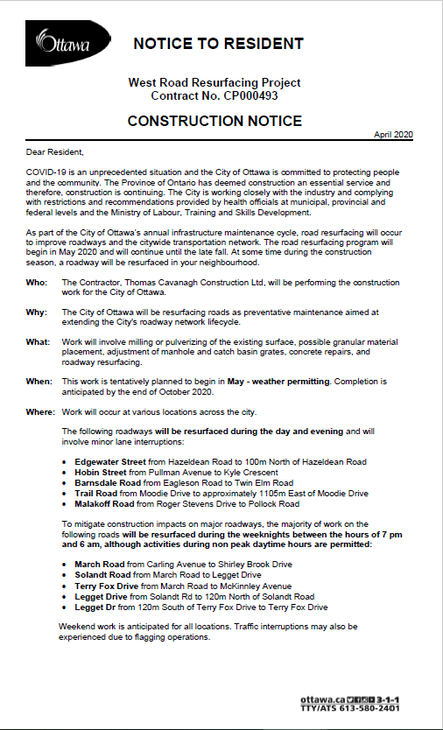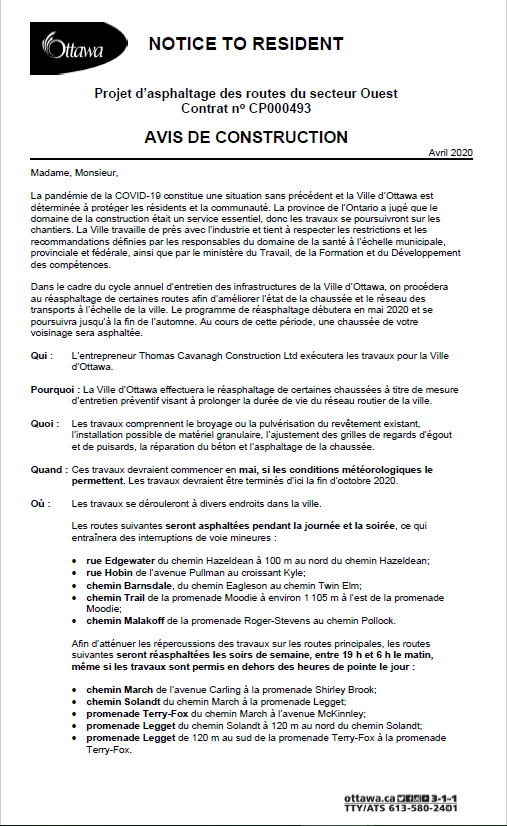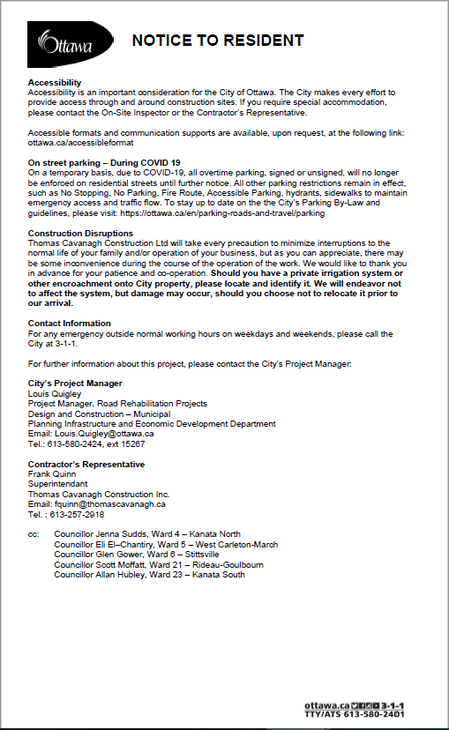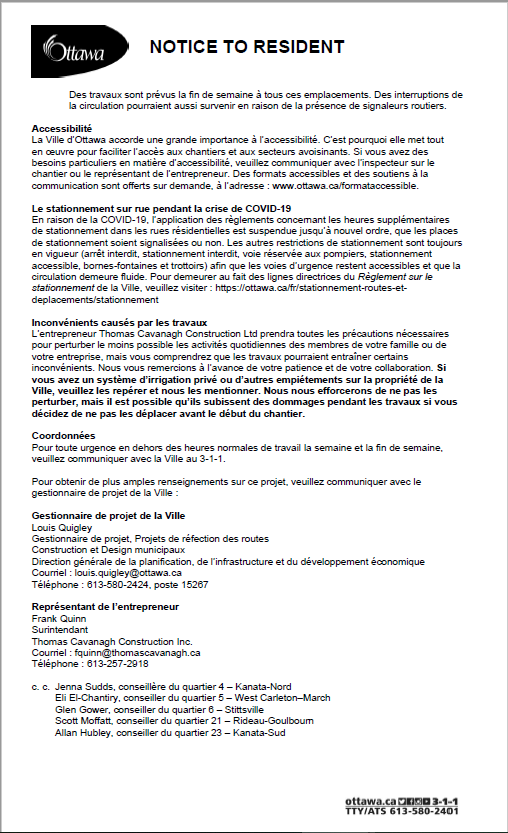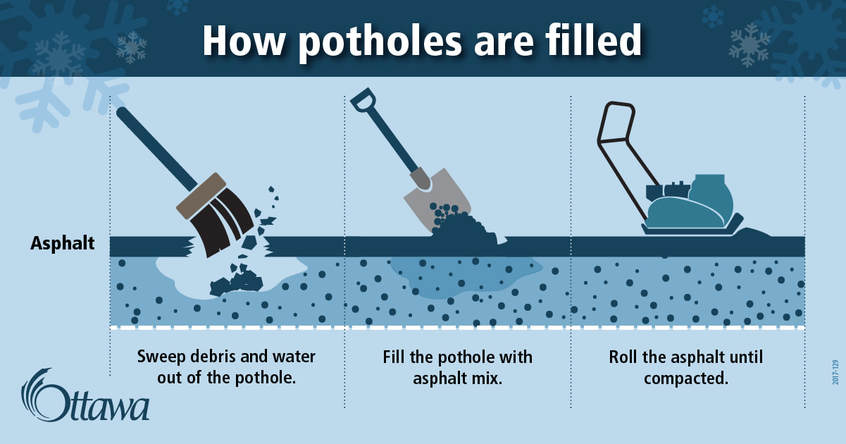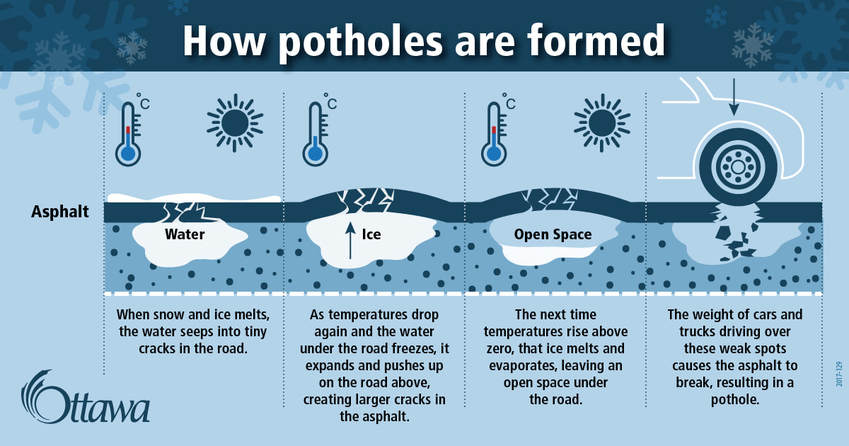September 12, 2022
Update regarding the ongoing Eagleson/Romina intersection signalization project. The contractor has had digital PVMS trailers deployed on site started on September 2nd informing motorists of the construction activities. Construction activities have been ongoing over the past few days with ground being broken today. This is great news!
More updates are soon to follow.
Update regarding the ongoing Eagleson/Romina intersection signalization project. The contractor has had digital PVMS trailers deployed on site started on September 2nd informing motorists of the construction activities. Construction activities have been ongoing over the past few days with ground being broken today. This is great news!
More updates are soon to follow.
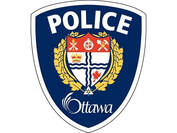
Ottawa Police use reports from residents to determine where to deploy our resources, so we recommend you advise residents to file:
- Traffic complaints: Visit ottawapolice.ca/TrafficComplaints for a how-to file a report. These types of complaints can be filed online, and our analysts take that data and use it to help us develop proactive policing measures to address issues of road safety.
- Online reports: Many reports can now be filed online, including: theft, lost property, mischief or damage to property, traffic complaints, drug complaints, fraud complaints, and hate-motivated incidents. Please direct residents to our website to file their report.
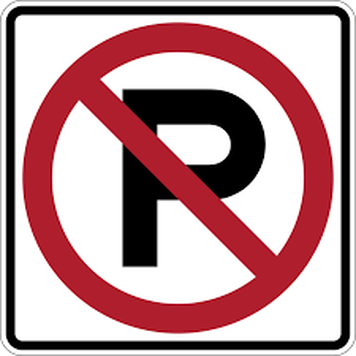
Parking Prohibited - Whether Signs Have Been Erected or Not
1. In excess of three (3) hours, Monday to Friday, between 7:00 am and 7:00 pm
2. In excess of six (6) hours on weekends and statutory holidays, between 7:00 am and 7 pm
3. within 300 metres of previous parking space within one (1) hour
4. within 9 metres of an intersection
5. within 3 metres of a fire hydrant
6. within 1.5 metres of a driveway
7. on a roadway which is 6 metres or less in width
8. on any portion of a highway not intended for vehicle parking
9. during snow removal and street sweeping operations
10. angle parking is permitted on a highway where the angle has been designated by signs or markings on the roadway
11. no person shall remain parked on any highway where there are parking meters unless such vehicle is parked entirely within the area designated as a parking meter space
Stopping Prohibited - Whether Signs Have Been Erected or Not:
1. within a pedestrian crossover, within 30 metres of the approach side of a pedestrian crossover or within 15 metres of the leaving side of a pedestrian crossover
2. within thirty (30 m) metres of the approach or leaving side of a roundabout
3. within 34 metres of the approach side of a bus stop and within 18 metres of the leaving side of a bus stop
4. within an intersection or crosswalk
5. between the hours of 7:00 am to 7:00 pm within 30 metres of the approach side of a school crosswalk and within 10 metres of the leaving side of a school crosswalk
6. upon a bridge, within an underpass or within 30 metres of any such structure unless parking is otherwise permitted by signs
7. on or partly on or over a sidewalk
No person shall park or stop any vehicle or permit a vehicle to remain parked or stopped on any highway except as follows:
1. where there is a raised curb, on the right side of the roadway, having regard to the direction in which the vehicle was travelling, with its right front and rear wheels parallel to and not more than fifteen (15) centimetres away from such curb; or
2. where there is no curb or a rolled curb, on the right side of the highway having regard to the direction in which the vehicle was travelling, with the right front and rear wheels parallel to and as near to the right hand limit of the highway as is practicable without stopping over any part of a highway which is landscaped or which is not intended for the use of vehicles
1. In excess of three (3) hours, Monday to Friday, between 7:00 am and 7:00 pm
2. In excess of six (6) hours on weekends and statutory holidays, between 7:00 am and 7 pm
3. within 300 metres of previous parking space within one (1) hour
4. within 9 metres of an intersection
5. within 3 metres of a fire hydrant
6. within 1.5 metres of a driveway
7. on a roadway which is 6 metres or less in width
8. on any portion of a highway not intended for vehicle parking
9. during snow removal and street sweeping operations
10. angle parking is permitted on a highway where the angle has been designated by signs or markings on the roadway
11. no person shall remain parked on any highway where there are parking meters unless such vehicle is parked entirely within the area designated as a parking meter space
Stopping Prohibited - Whether Signs Have Been Erected or Not:
1. within a pedestrian crossover, within 30 metres of the approach side of a pedestrian crossover or within 15 metres of the leaving side of a pedestrian crossover
2. within thirty (30 m) metres of the approach or leaving side of a roundabout
3. within 34 metres of the approach side of a bus stop and within 18 metres of the leaving side of a bus stop
4. within an intersection or crosswalk
5. between the hours of 7:00 am to 7:00 pm within 30 metres of the approach side of a school crosswalk and within 10 metres of the leaving side of a school crosswalk
6. upon a bridge, within an underpass or within 30 metres of any such structure unless parking is otherwise permitted by signs
7. on or partly on or over a sidewalk
No person shall park or stop any vehicle or permit a vehicle to remain parked or stopped on any highway except as follows:
1. where there is a raised curb, on the right side of the roadway, having regard to the direction in which the vehicle was travelling, with its right front and rear wheels parallel to and not more than fifteen (15) centimetres away from such curb; or
2. where there is no curb or a rolled curb, on the right side of the highway having regard to the direction in which the vehicle was travelling, with the right front and rear wheels parallel to and as near to the right hand limit of the highway as is practicable without stopping over any part of a highway which is landscaped or which is not intended for the use of vehicles
August 15, 2022
McCurdy Repaving
The resurfacing work was indeed coordinated with Bell wherein Bell did their installations to a point and then the resurfacing team came in to execute that work. The base lift of asphalt is down. There will be some curb and sidewalk work to follow shortly. Following this City work, Bell will return to site to complete their installations. We have been in very good communication with Bell.
Regarding the development at 33 McCurdy, we agree that the condition of the road cut had deteriorated but be assured that the City has been in contact with that private contractor throughout the resurfacing project. Two departments at the city look after the resurfacing and the other, the private development. These two departments have also been communicating with each other coordinating the necessary activities
McCurdy Repaving
The resurfacing work was indeed coordinated with Bell wherein Bell did their installations to a point and then the resurfacing team came in to execute that work. The base lift of asphalt is down. There will be some curb and sidewalk work to follow shortly. Following this City work, Bell will return to site to complete their installations. We have been in very good communication with Bell.
Regarding the development at 33 McCurdy, we agree that the condition of the road cut had deteriorated but be assured that the City has been in contact with that private contractor throughout the resurfacing project. Two departments at the city look after the resurfacing and the other, the private development. These two departments have also been communicating with each other coordinating the necessary activities
Update on the 2022 West Urban 2 Resurfacing project, and particularly for Kakulu and Anik Way tentatively scheduled to start the week of June 13th , 2022 for Kakulu Rd from Castlefrank Rd to Eagleson Rd and the week of July 18th for Anik Way from Chimo Dr to Kakulu Rd.
The work will include removal of asphalt by milling, addition of granular base in select locations, select concrete repairs, iron adjustments and asphalt paving. It is anticipated that the project will wrap up in September 2022, depending on weather conditions.
Attached for your awareness is the notice to residents that will be delivered next week, French version will also be distributed. This notice will also be posted online at Ottawa.ca/constructionnotices. It will be added to the Traffic Impacts page and included on the Traffic.Ottawa.ca map. The Traffic Report will also be updated for this project.
Our Contractor is also tentatively scheduled to mobilize in early July, 2022 to the following locations
Additionally our Contractor is tentatively scheduled to mobilize to the following location mid-August, 2022
Rickey Place from McElroy to Winchester Dr
The work will include removal of asphalt by milling, addition of granular base in select locations, select concrete repairs, iron adjustments and asphalt paving. It is anticipated that the project will wrap up in September 2022, depending on weather conditions.
Attached for your awareness is the notice to residents that will be delivered next week, French version will also be distributed. This notice will also be posted online at Ottawa.ca/constructionnotices. It will be added to the Traffic Impacts page and included on the Traffic.Ottawa.ca map. The Traffic Report will also be updated for this project.
Our Contractor is also tentatively scheduled to mobilize in early July, 2022 to the following locations
- McCurdy Dr from Castlefrank (N) to Castelfrank (S)
- Patch Way from McCurdy Dr to Dead End
- Sicard Way from McCurdy Dr to Dead End
Additionally our Contractor is tentatively scheduled to mobilize to the following location mid-August, 2022
Rickey Place from McElroy to Winchester Dr
Your browser does not support viewing this document. Click here to download the document.
Rickey Place from McElroy to Winchester Dr
Your browser does not support viewing this document. Click here to download the document.
Street cleaning Scheduled
Start: April 29, 2022
Start: April 29, 2022
|
|
April 1, 2022
Pothole Repairs
Roads and Parking Services has continued their hard work applying temporary patches to potholes created by snow, freezing rain, freeze/thaw cycles and wet conditions the city has experienced over the last couple of weeks.
Filling potholes remains a priority for our team and last week, we were able to deploy 184 crews to pothole repairs during both day and night shifts. This week, with 167 crews hard at work all while continuing to juggle winter and spring operational activities, we managed to fill over 26,700 potholes in just 9 days!
Potholes-by-the-Numbers
We thank residents for supporting our operations by letting us know where potholes are located! Residents wishing to report a pothole may create a service request online.
What’s Next?
Crews will continue their work on pothole repairs as the team begin preparations for the transition to spring maintenance activities.
We will continue to provide operational updates regarding our progress and as always, appreciate your continued support.
Pothole Repairs
Roads and Parking Services has continued their hard work applying temporary patches to potholes created by snow, freezing rain, freeze/thaw cycles and wet conditions the city has experienced over the last couple of weeks.
Filling potholes remains a priority for our team and last week, we were able to deploy 184 crews to pothole repairs during both day and night shifts. This week, with 167 crews hard at work all while continuing to juggle winter and spring operational activities, we managed to fill over 26,700 potholes in just 9 days!
Potholes-by-the-Numbers
- The total number of potholes repaired between January 1 and March 30, 2022 is 69,101.
- The total number of potholes filled for the same period in 2021 is 48,349, an increase of 20,752.
- From January 1 to March 30, 2022, 3,504 service requests for potholes were submitted.
We thank residents for supporting our operations by letting us know where potholes are located! Residents wishing to report a pothole may create a service request online.
What’s Next?
Crews will continue their work on pothole repairs as the team begin preparations for the transition to spring maintenance activities.
We will continue to provide operational updates regarding our progress and as always, appreciate your continued support.
December 20, 2021
November 10, 2021
Castlefrank road work
The work on Castlefrank Road continues, however the majority of the paving work has completed. The curb and sidewalk upgrades are completed, however, there will still be quite a bit of work throughout the site over the next week while the work is finished, and the area is reinstated. Please remember there will still be delays on Castlefrank between Hazeldean and Torcastle.
Castlefrank road work
The work on Castlefrank Road continues, however the majority of the paving work has completed. The curb and sidewalk upgrades are completed, however, there will still be quite a bit of work throughout the site over the next week while the work is finished, and the area is reinstated. Please remember there will still be delays on Castlefrank between Hazeldean and Torcastle.
October 28, 2021
Updated Notice of Sewer Cleaning Activity
Water Services is projected to perform routine sanitary sewer cleaning in Kanata South which started yesterday October 28, 2021 and will continue next week on November 1st and 2nd, 2021.
Notice of Sewer Cleaning Activity
Water Services is projected to perform routine sanitary sewer cleaning in your ward started yesterday October 27th, 2021.
For more information on wastewater collection, please visit ottawa.ca or contact 3-1-1.
Why does the City clean the sewer system?
The City of Ottawa conducts routine cleaning of sewers to ensure that wastewater from homes and businesses is efficiently transported to the Robert O. Pickard Environmental Centre (ROPEC), the City’s treatment facility.
What is a sewer blow-back?
During the cleaning process, the use of high pressure water creates air pockets inside the sewer pipe that generally escape with no impact to a property’s internal plumbing.
In some cases, this air pressure can only escape through the sewer connection between the house and the City’s sewer system, via the internal plumbing vent. If this passage is blocked, air pressure may escape through a toilet or drain. This can result in the release of odours, or on rare occasions sewage contaminated water, into a home or business – known as a "blow-back."
What can I do to prepare for sewer cleaning activity?
Keeping lids on toilets during cleaning can minimize impacts in the unlikely event of a blow-back.
What if I experience a blow-back?
Please immediately contact the City at 3-1-1. City staff will contact the homeowner by phone to determine the scope of the problem. If required, staff may be dispatched to your home.
Please note:
Where can I get help with the cleanup?
Typically, recovery from a blow-back event is simply a matter of removing any debris and the cleaning of toilets, sinks, baths and showers that have come into contact with the contaminated water. You may then continue normal use.
Please note:
Do I need to worry about my health?
Blow-back events that involve only the discharge of sewage contaminated water to walls or surfaces do not result in an immediate health risk. However, it is important that all sewage contaminated water and debris be removed and that surfaces that have come in contact with this water be cleaned. This will require the cleaning of surfaces with a soap solution and disinfection with a diluted household bleach/water solution. Regular household cleaning products are all that is needed and rubber gloves are recommended.
Remember:
Making a claim
Updated Notice of Sewer Cleaning Activity
Water Services is projected to perform routine sanitary sewer cleaning in Kanata South which started yesterday October 28, 2021 and will continue next week on November 1st and 2nd, 2021.
Notice of Sewer Cleaning Activity
Water Services is projected to perform routine sanitary sewer cleaning in your ward started yesterday October 27th, 2021.
For more information on wastewater collection, please visit ottawa.ca or contact 3-1-1.
Why does the City clean the sewer system?
The City of Ottawa conducts routine cleaning of sewers to ensure that wastewater from homes and businesses is efficiently transported to the Robert O. Pickard Environmental Centre (ROPEC), the City’s treatment facility.
What is a sewer blow-back?
During the cleaning process, the use of high pressure water creates air pockets inside the sewer pipe that generally escape with no impact to a property’s internal plumbing.
In some cases, this air pressure can only escape through the sewer connection between the house and the City’s sewer system, via the internal plumbing vent. If this passage is blocked, air pressure may escape through a toilet or drain. This can result in the release of odours, or on rare occasions sewage contaminated water, into a home or business – known as a "blow-back."
What can I do to prepare for sewer cleaning activity?
Keeping lids on toilets during cleaning can minimize impacts in the unlikely event of a blow-back.
What if I experience a blow-back?
Please immediately contact the City at 3-1-1. City staff will contact the homeowner by phone to determine the scope of the problem. If required, staff may be dispatched to your home.
Please note:
- Properties identified as having experienced a blow-back in the past are placed on an advanced notification list and receive a hand delivered notice 24-48 hours in advance of cleaning activity.
- During subsequent sewer cleanings, the pressure at which cleaning is carried out is at lowered at sites that have experienced a blow-back to help reduce the possibility of a repeat event.
- If you have a second incident, consider checking your plumbing to ensure that service connection and vent pipes are clear of debris and are functioning properly.
Where can I get help with the cleanup?
Typically, recovery from a blow-back event is simply a matter of removing any debris and the cleaning of toilets, sinks, baths and showers that have come into contact with the contaminated water. You may then continue normal use.
Please note:
- The City does not provide a cleaning service. Your options are to proceed with the cleanup yourself or hire an outside cleaner. If you hire a company to complete the cleaning, please submit these costs as a claim and the City will reimburse all reasonable costs that are properly documented.
- If there are damages beyond cleaning, consider contacting your insurance company. Damages should be brought to the attention of City staff during the initial inspection process.
Do I need to worry about my health?
Blow-back events that involve only the discharge of sewage contaminated water to walls or surfaces do not result in an immediate health risk. However, it is important that all sewage contaminated water and debris be removed and that surfaces that have come in contact with this water be cleaned. This will require the cleaning of surfaces with a soap solution and disinfection with a diluted household bleach/water solution. Regular household cleaning products are all that is needed and rubber gloves are recommended.
Remember:
- Never mix ammonia and chlorine products such as household bleach. If sewage contaminated water has come in contact with a person in your home or has possibly been ingested and you are concerned about your health, please seek medical attention.
Making a claim
- Prior to submitting a claim, contact 3-1-1 to:
- Initiate an inspection by the City’s First Response team
- Receive a customer service request number for future reference.
- Initiate a claim with the City by letter or sending an e-mail to [email protected](link sends e-mail). You will need to reference the event, date, and actions taken.
- The Claims Unit will ensure claims are acknowledged, investigated, tracked, evaluated and resolved.
September 2, 2021
Upcoming Work on Terry Fox Drive and Castlefrank Road
You may have noticed that work has begun on Terry Fox Drive between Hazeldean Road and Castlefrank Road this past week.
This project will see Terry Fox resurfaced between Hazeldean and Castlefrank and should be completed over the next 2-3 weeks (weather dependent).
All traffic flow will be accommodated as the work proceeds, with minor interruptions at intersections while we place and compact the asphalt.
Next week, you will see work commence on another project in the area, the resurfacing of Castlefrank Road between Torcastle Way and Hazeldean Road.
The work on Castlefrank is scheduled to be completed early Fall of 2021.
Should you have any questions, please email me at [email protected] or by calling 613-580-2752.
Upcoming Work on Terry Fox Drive and Castlefrank Road
You may have noticed that work has begun on Terry Fox Drive between Hazeldean Road and Castlefrank Road this past week.
This project will see Terry Fox resurfaced between Hazeldean and Castlefrank and should be completed over the next 2-3 weeks (weather dependent).
All traffic flow will be accommodated as the work proceeds, with minor interruptions at intersections while we place and compact the asphalt.
Next week, you will see work commence on another project in the area, the resurfacing of Castlefrank Road between Torcastle Way and Hazeldean Road.
The work on Castlefrank is scheduled to be completed early Fall of 2021.
Should you have any questions, please email me at [email protected] or by calling 613-580-2752.
West Road Resurfacing Project – Castlefrank Road
Contract No. CP00058
Contract No. CP00058
COVID-19 is an unprecedented situation and the City of Ottawa is committed to protecting people and the community. The Province of Ontario has allowed certain businesses and workplaces, including all municipal construction projects, to continue operations subject to compliance with strict public health and safety protocols. The City is working closely with the industry and complying with restrictions and recommendations provided by municipal, provincial and federal health officials, as well as the Ministry of Labour, Training and Skills Development.
In 2021, there is approximately $45 million for roadway renewal and upgrading rural roads. The City’s road resurfacing program rehabilitates and improves the driving surfaces of Ottawa’s roadways. Localized repairs to both curbs and sidewalks, along with accessibility improvements and updates, are also part of the program.
For more information about road renewal, please visit ottawa.ca/constructionmap.
As part of the City of Ottawa’s annual infrastructure maintenance cycle, road resurfacing will occur along Castlefrank Road, from Torcastle Way to Hazeldean Road, to improve these roadways and the overall citywide transportation network.
What: Work will involve milling or pulverizing of the existing surface, possible granular material placement, adjustment of maintenance hole and catch basin grates, concrete repairs, and roadway resurfacing.
Why: The City of Ottawa will be resurfacing roads as preventative maintenance aimed at extending the City's roadway network lifecycle.
When: This work is tentatively planned to begin August 2021 and is expected to be completed by early fall 2021.
Where: The following roadway will be resurfaced during the day and evening and will involve minor lane interruptions:
Who: The City of Ottawa has retained the Contractor, Thomas Cavanagh Construction Ltd, to complete the work.
We encourage residents to contact the undersigned to identify and confirm that private irrigations systems have been disconnected or relocated. Damage may occur, should you choose not to relocate prior to our arrival.
Accessibility
Accessibility is an important consideration for the City of Ottawa. The City makes every effort to provide access through and around construction sites. If you require special accommodation, please contact the undersigned. Accessible formats and communication supports are available, upon request, at the following link: www.ottawa.ca/accessibleformat
On-Street Parking
The Contractor is obligated to provide 24-hour notification of temporary loss of access/egress. In the event that access to your driveway is restricted due to construction activities, a Temporary On-Street Parking Permit (orange form) will be distributed to permit on-street parking within two blocks of your residence.
Construction Disruptions
Thomas Cavanagh Construction Ltd will take every precaution to minimize interruptions to the normal life of your family and/or operation of your business, but as you can appreciate, there may be some inconvenience during the course of the operation of the work. We would like to thank you in advance for your patience and co-operation.
For construction activity hours of work, the City of Ottawa follows provincial requirements and the City’s Noise By-law (2017-255).
Contact Information
For any emergency outside normal working hours on weekdays and weekends, please call the City at 3-1-1. For further information about this project, please contact the City’s Project Manager:
City Project Manager Contractor Representative
Louis Quigley Ryan Quesnel
Project Manager, Road Rehabilitation Projects Superintendent
Design and Construction – Municipal Thomas Cavanagh Construction Inc.
Tel.: 613-580-2424, ext. 15267 Tel.: 613-257-2918
Email: [email protected] Email: [email protected]
In 2021, there is approximately $45 million for roadway renewal and upgrading rural roads. The City’s road resurfacing program rehabilitates and improves the driving surfaces of Ottawa’s roadways. Localized repairs to both curbs and sidewalks, along with accessibility improvements and updates, are also part of the program.
For more information about road renewal, please visit ottawa.ca/constructionmap.
As part of the City of Ottawa’s annual infrastructure maintenance cycle, road resurfacing will occur along Castlefrank Road, from Torcastle Way to Hazeldean Road, to improve these roadways and the overall citywide transportation network.
What: Work will involve milling or pulverizing of the existing surface, possible granular material placement, adjustment of maintenance hole and catch basin grates, concrete repairs, and roadway resurfacing.
Why: The City of Ottawa will be resurfacing roads as preventative maintenance aimed at extending the City's roadway network lifecycle.
When: This work is tentatively planned to begin August 2021 and is expected to be completed by early fall 2021.
Where: The following roadway will be resurfaced during the day and evening and will involve minor lane interruptions:
- Castlefrank Road from Torcastle Way to Hazeldean Road
Who: The City of Ottawa has retained the Contractor, Thomas Cavanagh Construction Ltd, to complete the work.
We encourage residents to contact the undersigned to identify and confirm that private irrigations systems have been disconnected or relocated. Damage may occur, should you choose not to relocate prior to our arrival.
Accessibility
Accessibility is an important consideration for the City of Ottawa. The City makes every effort to provide access through and around construction sites. If you require special accommodation, please contact the undersigned. Accessible formats and communication supports are available, upon request, at the following link: www.ottawa.ca/accessibleformat
On-Street Parking
The Contractor is obligated to provide 24-hour notification of temporary loss of access/egress. In the event that access to your driveway is restricted due to construction activities, a Temporary On-Street Parking Permit (orange form) will be distributed to permit on-street parking within two blocks of your residence.
Construction Disruptions
Thomas Cavanagh Construction Ltd will take every precaution to minimize interruptions to the normal life of your family and/or operation of your business, but as you can appreciate, there may be some inconvenience during the course of the operation of the work. We would like to thank you in advance for your patience and co-operation.
For construction activity hours of work, the City of Ottawa follows provincial requirements and the City’s Noise By-law (2017-255).
Contact Information
For any emergency outside normal working hours on weekdays and weekends, please call the City at 3-1-1. For further information about this project, please contact the City’s Project Manager:
City Project Manager Contractor Representative
Louis Quigley Ryan Quesnel
Project Manager, Road Rehabilitation Projects Superintendent
Design and Construction – Municipal Thomas Cavanagh Construction Inc.
Tel.: 613-580-2424, ext. 15267 Tel.: 613-257-2918
Email: [email protected] Email: [email protected]
Update- Roadwork on Kakulu Road
You may have noticed that there is roadwork happening along Kakulu Road this August and I wanted to take this opportunity to explain the work and next steps for the roadway.
This work is part of the Cathodic Protection of Watermains Program and is done to prolong the life of Cast Iron watermain pipes installed throughout the city. As we know, metallic pipes tend to corrode, so installation of anodes increases pipe longevity and reduces pipe breaks over time. Larger cities do this type of work because open-cut replacement of watermain pipes is cost-prohibitive.
Here is a brief description of the installation process:
The Contractor will be responsible to ensure reinstatements are free from deficiencies during the warranty period (1 year), which should coincide with resurfacing timeline.
Please let me know if you have any questions [email protected] .
You may have noticed that there is roadwork happening along Kakulu Road this August and I wanted to take this opportunity to explain the work and next steps for the roadway.
This work is part of the Cathodic Protection of Watermains Program and is done to prolong the life of Cast Iron watermain pipes installed throughout the city. As we know, metallic pipes tend to corrode, so installation of anodes increases pipe longevity and reduces pipe breaks over time. Larger cities do this type of work because open-cut replacement of watermain pipes is cost-prohibitive.
Here is a brief description of the installation process:
- The contractor will drill through the asphalt surface with an auger attached to a skid steer. The holes are done at 5.4m intervals.
- Hydrovac down to the watermain to expose the pipe.
- Weld a sacrificial anode which is those cylindrical tubes that you may have seen laying by the roadway.
- Backfill the hole using self-compacting fine granular (stone-dust + sand + water mix) up to the bottom of asphalt.
- Fill in the remaining top layer with asphalt to match grade with the addition of a crest (similar to dentist cavity filling).
- The final step is to clean up the site using a street sweeper.
The Contractor will be responsible to ensure reinstatements are free from deficiencies during the warranty period (1 year), which should coincide with resurfacing timeline.
Please let me know if you have any questions [email protected] .
Street Sweeping
It is the time of year when our Roads and Parking Services team is focused on cleaning our communities and making them as safe as possible for those summer commutes, cycling trips and leisurely walks. Our street sweeping operations are an important part of this clean-up work.
Street Sweeping
Street sweeping takes place each spring to remove debris and material from all paved roads and hard surfaces. The debris may have accumulated during the winter and is more noticeable as snow melts. Debris left on the road could pose dangers to traffic, pedestrians and cyclists and clog catch basins.
The City uses both internal resources and contractors to complete street sweeping operations. We do this because it is more efficient – allowing us to clean our communities in a timely manner so residents can enjoy being outdoors as soon as possible. Our City owns a small number of street sweeper trucks, however we rely on our contractors for additional support during to address these seasonal pressures.
Timing
Street sweeping operations begin in early spring when most of the snow has melted from the edge of the roadways. We cannot sweep in the evenings when temperatures drop below zero as the water we use on the road can form into ice, creating dangerous conditions. If there is a winter weather event, operations will be stopped as our teams respond to the conditions – to clear and treat the roads.
In some parts of our City, street sweeping operations have already begun – an early start this year due to the exceptionally warm weather we experienced last week. Suburban street sweeping begins as early as the weather will allow in the spring. Our Maintenance Quality Standards (MQS) require us to complete our street sweeping operations by May 31. Street sweeping operations in these communities will happen around the clock – though we do try to focus our overnight sweeping efforts on our arterial roadways and less in the residential areas.
In our urban core, where paid parking is in place, we complete what is known as concentrated street sweeping. In these areas, residents are required to move their cars to allow street sweeping operations to be completed. This work will begin on April 6 (weather dependent) and continue until approximately April 14. Signage will be posted to alert residents to our concentrated street sweeping operations.
How is street sweeping completed?
Street sweeping is done in phases.
Concentrated sweeping is conducted in core neighbourhoods including the downtown core, Vanier, New Edinburgh, Sandy Hill and the Glebe. These neighbourhoods receive concentrated street sweeping as a result of continuous on-street parking, which prevents effective sweeping.
Resident support is required!
We recognize that street sweeping operations can be noisy for the short period they take place. Sadly, there is no quieter alternative way to clean as effectively. We appreciate residents support for our efforts as we complete our work.
Residents are also reminded to not rake or blow leaves, lawn clippings or other debris onto the roadway. It may seem like a good way to clean your property, but it is an infraction of the Use and Care of Roads By-law 2003-498.
Finally, residents are reminded to observe all posted signage and to remove their vehicles in designated areas to allow our street sweeping teams to complete their clean-up.
For more information about our street sweeping operations, please visit Ottawa.ca.
Street Sweeping
Street sweeping takes place each spring to remove debris and material from all paved roads and hard surfaces. The debris may have accumulated during the winter and is more noticeable as snow melts. Debris left on the road could pose dangers to traffic, pedestrians and cyclists and clog catch basins.
The City uses both internal resources and contractors to complete street sweeping operations. We do this because it is more efficient – allowing us to clean our communities in a timely manner so residents can enjoy being outdoors as soon as possible. Our City owns a small number of street sweeper trucks, however we rely on our contractors for additional support during to address these seasonal pressures.
Timing
Street sweeping operations begin in early spring when most of the snow has melted from the edge of the roadways. We cannot sweep in the evenings when temperatures drop below zero as the water we use on the road can form into ice, creating dangerous conditions. If there is a winter weather event, operations will be stopped as our teams respond to the conditions – to clear and treat the roads.
In some parts of our City, street sweeping operations have already begun – an early start this year due to the exceptionally warm weather we experienced last week. Suburban street sweeping begins as early as the weather will allow in the spring. Our Maintenance Quality Standards (MQS) require us to complete our street sweeping operations by May 31. Street sweeping operations in these communities will happen around the clock – though we do try to focus our overnight sweeping efforts on our arterial roadways and less in the residential areas.
In our urban core, where paid parking is in place, we complete what is known as concentrated street sweeping. In these areas, residents are required to move their cars to allow street sweeping operations to be completed. This work will begin on April 6 (weather dependent) and continue until approximately April 14. Signage will be posted to alert residents to our concentrated street sweeping operations.
How is street sweeping completed?
Street sweeping is done in phases.
- Sidewalks, bus stop pads and medians are cleaned first by a variety of methods using sidewalk sweepers, flusher trucks and hand brooms.
- A sidewalk sweeper will work in the area first, pushing grit, debris and dust onto the road way. A vacuum sweeper or mechanical sweeper truck then picks up the majority of grit, debris, small particles and dust removing it from the road.
- This operation might be repeated several times to ensure a clean surface. If vehicles are parked on the street, the unswept area is noted and crews will return to sweep that portion at a later date.
- In our suburban communities, we will be working around the clock to complete our street sweeping operations. Residents can expect to see our vehicles out working through the night.
Concentrated sweeping is conducted in core neighbourhoods including the downtown core, Vanier, New Edinburgh, Sandy Hill and the Glebe. These neighbourhoods receive concentrated street sweeping as a result of continuous on-street parking, which prevents effective sweeping.
- On-street parking restrictions are in effect in these neighbourhoods when marked. All Street Sweeping operations are weather dependent.
- Temporary “No Parking” signs are posted prominently. The parking restrictions apply to all vehicles, including those with on-street parking permits.
- Vehicles parked where temporary “no-parking” signs are posted will towed to nearby streets. Towed vehicles are usually moved just a few blocks over.
- Residents who are unable to locate their vehicle may call the Ottawa Police Service at 613-236-1222 (TTY: 613-232-1123).
- Residents who are unable to locate their vehicle may call the Ottawa Police Service at 613-236-1222 (TTY: 613-232-1123).
Resident support is required!
We recognize that street sweeping operations can be noisy for the short period they take place. Sadly, there is no quieter alternative way to clean as effectively. We appreciate residents support for our efforts as we complete our work.
Residents are also reminded to not rake or blow leaves, lawn clippings or other debris onto the roadway. It may seem like a good way to clean your property, but it is an infraction of the Use and Care of Roads By-law 2003-498.
Finally, residents are reminded to observe all posted signage and to remove their vehicles in designated areas to allow our street sweeping teams to complete their clean-up.
For more information about our street sweeping operations, please visit Ottawa.ca.
Changes to the Intersection at Carbrooke and Hazeldean
As many of you know, I have been working with the Safety Specialists in the Traffic Department for some time now, requesting that changes be made at the intersection of Hazeldean Road and Carbrooke/Irwin Gate to make it safer for both pedestrians and motorists. This intersection has been particularly challenging to deal with as Robertson Road merges down in lanes as it crosses Eagleson (turning into Hazeldean Road). Vehicles come through that intersection very quickly and, as many drivers can attest to, during the afternoon rush-hour the sun can be very bright driving westbound on Hazeldean into Kanata and on to Stittsville.
A major concern for me at this intersection is pedestrian safety. I have personally witnessed some very close calls where vehicles turning left (west) onto Hazeldean from Carbrooke, or right from Irwin Gate onto Hazeldean, have not seen pedestrians that are crossing the roadway. On some occasions, pedestrians do not have enough time to cross Hazeldean as they get stopped at the median (because vehicles are turning) and they are left trying to get across the other half of the road before the light turns red, which is very unsafe.
Therefore, I am happy to report that we are making some changes to this intersection to improve safety for both pedestrians and motorists. Effective in the coming days, a dedicated left turn arrow is being implemented for vehicles turning left onto Hazeldean Road from Carbrooke and for vehicles turning left onto Hazeldean Road from Irwin Gate. While this change will add a few more seconds to the overall light cycle at this intersection, vehicles will be able to make the left turn without having to worry about watching for pedestrians as the walk cycle to cross Hazeldean will not activate until after the green left turn arrow has completed. In addition, a few more seconds will be added to the pedestrian cross signal, so that there is more time to safely cross Hazeldean Road.
In the Spring, bright hatch markings will be added to the sides of Hazeldean road as well, making this one of the city’s Protected Intersections. This means that the corners of the intersection (where the new paint will go) will be ‘protected’, meaning that vehicles are not permitted on the area designated with hatch markings. This traffic calming measure will provide more space between pedestrians and vehicles and is an effective tool to visually narrow the roadway which helps slow down motorists.
This Spring you will see the addition of new ‘Pedestrian Ahead’ signage reminding motorists to slow down as the posted speed limit on Hazeldean Road is 60km/hr. I will also be installing a new speed board on Hazeldean Road to the south of the intersection, that will record vehicles speeds as well as being another cue for motorists to slow down.
The Traffic Dept. will continue to monitor this intersection, with the possible addition of future changes as needed. However, we need your help to make this intersection safer so please encourage others to be aware of pedestrians, cyclists and other vehicles in our community.
As many of you know, I have been working with the Safety Specialists in the Traffic Department for some time now, requesting that changes be made at the intersection of Hazeldean Road and Carbrooke/Irwin Gate to make it safer for both pedestrians and motorists. This intersection has been particularly challenging to deal with as Robertson Road merges down in lanes as it crosses Eagleson (turning into Hazeldean Road). Vehicles come through that intersection very quickly and, as many drivers can attest to, during the afternoon rush-hour the sun can be very bright driving westbound on Hazeldean into Kanata and on to Stittsville.
A major concern for me at this intersection is pedestrian safety. I have personally witnessed some very close calls where vehicles turning left (west) onto Hazeldean from Carbrooke, or right from Irwin Gate onto Hazeldean, have not seen pedestrians that are crossing the roadway. On some occasions, pedestrians do not have enough time to cross Hazeldean as they get stopped at the median (because vehicles are turning) and they are left trying to get across the other half of the road before the light turns red, which is very unsafe.
Therefore, I am happy to report that we are making some changes to this intersection to improve safety for both pedestrians and motorists. Effective in the coming days, a dedicated left turn arrow is being implemented for vehicles turning left onto Hazeldean Road from Carbrooke and for vehicles turning left onto Hazeldean Road from Irwin Gate. While this change will add a few more seconds to the overall light cycle at this intersection, vehicles will be able to make the left turn without having to worry about watching for pedestrians as the walk cycle to cross Hazeldean will not activate until after the green left turn arrow has completed. In addition, a few more seconds will be added to the pedestrian cross signal, so that there is more time to safely cross Hazeldean Road.
In the Spring, bright hatch markings will be added to the sides of Hazeldean road as well, making this one of the city’s Protected Intersections. This means that the corners of the intersection (where the new paint will go) will be ‘protected’, meaning that vehicles are not permitted on the area designated with hatch markings. This traffic calming measure will provide more space between pedestrians and vehicles and is an effective tool to visually narrow the roadway which helps slow down motorists.
This Spring you will see the addition of new ‘Pedestrian Ahead’ signage reminding motorists to slow down as the posted speed limit on Hazeldean Road is 60km/hr. I will also be installing a new speed board on Hazeldean Road to the south of the intersection, that will record vehicles speeds as well as being another cue for motorists to slow down.
The Traffic Dept. will continue to monitor this intersection, with the possible addition of future changes as needed. However, we need your help to make this intersection safer so please encourage others to be aware of pedestrians, cyclists and other vehicles in our community.
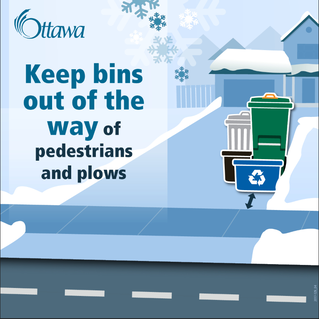
Winter Maintenance Update – March 3rd
We are waking up to more snow than expected this morning– between 8 and 15 cm depending on which part of the City you live in. We are anticipating light flurries throughout the day, and rising temperatures. Tonight, the temperatures will drop again to approximately -14 degrees.
Roads and Parking staff were out as snow began to fall to begin clearing our priority roads, sidewalks and the winter cycling network. The snow fell quickly and was heavy, and our mains remain snowy and slushy. Residents should expect a wet and slower commute this morning.
Our teams will continue to clear and treat our priority roads, sidewalks and winter cycling network. Early this morning, Teams will be deployed into local communities to complete a residential plow run. It is necessary for staff to stay on top of the accumulation today as temperatures rise and to clear roadways before it freezes up tonight causing potentially hazardous situations.
Throughout the day, residents can expect to see windrows blocking some residential streets, corners, cross walks, activated signals and bus stops. Staff have been deployed to clear these areas today and will continue overnight tonight to clean them up.
A winter weather parking ban was not called today due to the suddenness of the storm and greater than expected accumulation. We are asking that any residents who are able to please remove their vehicle from the roadway to allow our teams to clear the roads more efficiently. For those who have waste collection day today, please place your bins in your driveway and not on the roadway or sidewalk to avoid obstructing our efforts.
We are waking up to more snow than expected this morning– between 8 and 15 cm depending on which part of the City you live in. We are anticipating light flurries throughout the day, and rising temperatures. Tonight, the temperatures will drop again to approximately -14 degrees.
Roads and Parking staff were out as snow began to fall to begin clearing our priority roads, sidewalks and the winter cycling network. The snow fell quickly and was heavy, and our mains remain snowy and slushy. Residents should expect a wet and slower commute this morning.
Our teams will continue to clear and treat our priority roads, sidewalks and winter cycling network. Early this morning, Teams will be deployed into local communities to complete a residential plow run. It is necessary for staff to stay on top of the accumulation today as temperatures rise and to clear roadways before it freezes up tonight causing potentially hazardous situations.
Throughout the day, residents can expect to see windrows blocking some residential streets, corners, cross walks, activated signals and bus stops. Staff have been deployed to clear these areas today and will continue overnight tonight to clean them up.
A winter weather parking ban was not called today due to the suddenness of the storm and greater than expected accumulation. We are asking that any residents who are able to please remove their vehicle from the roadway to allow our teams to clear the roads more efficiently. For those who have waste collection day today, please place your bins in your driveway and not on the roadway or sidewalk to avoid obstructing our efforts.
WMQS Project
The City is Updating its Winter Maintenance Quality Standards
The City’s Winter Maintenance Quality Standards (WMQS) are approved by Council and they define the “desirable level of maintenance and the executed outcome of each winter service by defining the timing and extent of each winter maintenance activity in the context of achieving the overall objective of safe and passable roads and sidewalks by reducing hazards caused by snow and ice accumulation.” Essentially, they provide guidance on when, and how, the City will address winter weather conditions (snow, ice, freezing rain) on roads, sidewalks, bicycle lanes and multi-use pathways to ensure that they are safe for drivers and pedestrians.
The WMQS were last updated in 2003 and much has changed since then – including the fact that transportation users have less tolerance for any obstructed mobility and many have moved away from single drivers in cars, to more group transportation and active transportation options (walking, biking etc).
“It’s important to know there will be no reduction in service as part of this Project,” said Chad Findlay, WMQS Review Project Lead. “We are suggesting either maintaining current standards or proposing options for increased service levels. And that’s why we want to hear from residents. We want to understand what their priorities are, if they are happy with current service levels and if they aren’t happy, we want to understand exactly what they’d like to see changed.”
Not all winter maintenance activities are being reviewed as part of this project – it’s very specific to the City’s active transportation network (sidewalks, cycling network, pathways and multi-use pathways), Class 5 roadways and Class 4 roadways without sidewalks. More information on the project can be found on Engage Ottawa ( https://engage.ottawa.ca/wmqs ).
The City has planned a number of engagement opportunities; an online survey will be launched in mid-January and four virtual workshops are planned: January 25 from 7-9pm; January 26 from 7-9pm; January 27 from 7-9pm and January 28 from 1-3pm. You can sign up to receive Project updates, or register for any of the virtual workshops, on the Engage Ottawa site.
You might be wondering what the current Standards are and how you are impacted based on where you live and where you go. Keep on reading to learn about how we prioritize.
First level
Our first step is to keep the City’s major roads clear. At the first sign of any accumulation, we respond to Highway 174 and the Transitway, and we keep responding until accumulation stops. This helps ensure the morning and afternoon commutes go as safely and efficiently as possible.
Second level – 2.5 centimetres
Once we determine that 2.5 centimetres of snow has fallen, we start work on high volume roads, such as the downtown core, busy sidewalks and the cycling network. These avenues typically have the highest volume of traffic. Keeping them clear helps ensure the morning and afternoon commutes go as safely and efficiently as possible.
Maintaining sidewalks and pathways is part of the City’s commitment to supporting viable active transportation options year-round. Only a portion of the cycling network is winter-maintained, though, and you can visit the Winter Cycling Network(External link) for details.
Our goal is to clear the downtown roads and cycling network within four hours of the last snowflake having fallen.
Third level – 5 centimetres
Once we determine that 5 centimetres of snow has fallen, we respond to Class 4 and Class 5 roads – the major and minor collector roads that link neighbourhoods. In the days before amalgamation, many of these were known as regional roads. Major collectors are roads like Carling Avenue, Carp Road and Innes Road. Minor collectors are roads like Sherway Drive, Duford Drive or Castlefrank Road.
We also begin clearing more sidewalks, roads with OC Transpo service and roads that lead to schools and long-term care homes. This helps families, students and emergency responders get where they need to go.
Our goal is to clear the roads within six hours of the last snowflake having fallen, and to clear sidewalks within 16 hours.
Fourth level – 7 centimetres or more
If 7 centimetres or more of snow has fallen, we expand service to include roads in areas that are primarily residential, where you or someone you know probably live. Roads in residential areas are typically the last roads we plow, after the first three levels have been addressed.
Our goal is to clear all these roads within 10 hours of the last snowflake having fallen.
Subscribe to our Project page for automatic alerts for engagement opportunities and future updates!
The City’s Winter Maintenance Quality Standards (WMQS) are approved by Council and they define the “desirable level of maintenance and the executed outcome of each winter service by defining the timing and extent of each winter maintenance activity in the context of achieving the overall objective of safe and passable roads and sidewalks by reducing hazards caused by snow and ice accumulation.” Essentially, they provide guidance on when, and how, the City will address winter weather conditions (snow, ice, freezing rain) on roads, sidewalks, bicycle lanes and multi-use pathways to ensure that they are safe for drivers and pedestrians.
The WMQS were last updated in 2003 and much has changed since then – including the fact that transportation users have less tolerance for any obstructed mobility and many have moved away from single drivers in cars, to more group transportation and active transportation options (walking, biking etc).
“It’s important to know there will be no reduction in service as part of this Project,” said Chad Findlay, WMQS Review Project Lead. “We are suggesting either maintaining current standards or proposing options for increased service levels. And that’s why we want to hear from residents. We want to understand what their priorities are, if they are happy with current service levels and if they aren’t happy, we want to understand exactly what they’d like to see changed.”
Not all winter maintenance activities are being reviewed as part of this project – it’s very specific to the City’s active transportation network (sidewalks, cycling network, pathways and multi-use pathways), Class 5 roadways and Class 4 roadways without sidewalks. More information on the project can be found on Engage Ottawa ( https://engage.ottawa.ca/wmqs ).
The City has planned a number of engagement opportunities; an online survey will be launched in mid-January and four virtual workshops are planned: January 25 from 7-9pm; January 26 from 7-9pm; January 27 from 7-9pm and January 28 from 1-3pm. You can sign up to receive Project updates, or register for any of the virtual workshops, on the Engage Ottawa site.
You might be wondering what the current Standards are and how you are impacted based on where you live and where you go. Keep on reading to learn about how we prioritize.
First level
Our first step is to keep the City’s major roads clear. At the first sign of any accumulation, we respond to Highway 174 and the Transitway, and we keep responding until accumulation stops. This helps ensure the morning and afternoon commutes go as safely and efficiently as possible.
Second level – 2.5 centimetres
Once we determine that 2.5 centimetres of snow has fallen, we start work on high volume roads, such as the downtown core, busy sidewalks and the cycling network. These avenues typically have the highest volume of traffic. Keeping them clear helps ensure the morning and afternoon commutes go as safely and efficiently as possible.
Maintaining sidewalks and pathways is part of the City’s commitment to supporting viable active transportation options year-round. Only a portion of the cycling network is winter-maintained, though, and you can visit the Winter Cycling Network(External link) for details.
Our goal is to clear the downtown roads and cycling network within four hours of the last snowflake having fallen.
Third level – 5 centimetres
Once we determine that 5 centimetres of snow has fallen, we respond to Class 4 and Class 5 roads – the major and minor collector roads that link neighbourhoods. In the days before amalgamation, many of these were known as regional roads. Major collectors are roads like Carling Avenue, Carp Road and Innes Road. Minor collectors are roads like Sherway Drive, Duford Drive or Castlefrank Road.
We also begin clearing more sidewalks, roads with OC Transpo service and roads that lead to schools and long-term care homes. This helps families, students and emergency responders get where they need to go.
Our goal is to clear the roads within six hours of the last snowflake having fallen, and to clear sidewalks within 16 hours.
Fourth level – 7 centimetres or more
If 7 centimetres or more of snow has fallen, we expand service to include roads in areas that are primarily residential, where you or someone you know probably live. Roads in residential areas are typically the last roads we plow, after the first three levels have been addressed.
Our goal is to clear all these roads within 10 hours of the last snowflake having fallen.
Subscribe to our Project page for automatic alerts for engagement opportunities and future updates!
The City Wants to Hear from You!
223.5 cm (or just over 7 feet for those who still use imperial measurements)! That’s the normal snowfall for the season in Ottawa. When that 223.5 cm starts to fall and accumulate, the City’s winter maintenance quality standards (WMQS) dictate when staff and equipment are mobilized to begin clearing the streets and sidewalks to keep drivers, pedestrians and cyclists safe.
The City’s current WMQS were adopted in 2003 and a great deal has changed since then. City policies and plans have evolved, and we have many new and improved transportation options, from the LRT to cycle tracks and more sidewalks on local streets. The result is a shift away from single drivers in vehicles to increased use of public and active transportation (walking, biking, roller blading, etc.).
The WMQS Project Team is also reviewing how the City can progressively plan the winter maintenance quality standards to accommodate for climate change; according to a recent study commissioned by the City and the National Capital Commission, winters could be four weeks shorter by the 2030s with far more freeze-thaw cycles between December and February, and fewer "deep freeze” events. This would have an impact on ice build-up, particularly on residential roadways, sidewalks and bike lanes. Accessibility, diversity, sustainability, safety and healthy living will also be reviewed as these weren’t considered when the current standards were drafted.
Between now and early 2021, the WMQS Project Team will be reviewing and developing new options for winter maintenance and they want to hear from you! For more information on the WMQS Review Project and ways to get involved please visit engage.ottawa.ca/wmqs
It’s also interesting to note that the Canadian Farmers’ Almanac is calling for “snowier-than-normal conditions” this season, so I suspect there’s probably going to be a lot to talk about!
Looking forward to hearing what you think!
223.5 cm (or just over 7 feet for those who still use imperial measurements)! That’s the normal snowfall for the season in Ottawa. When that 223.5 cm starts to fall and accumulate, the City’s winter maintenance quality standards (WMQS) dictate when staff and equipment are mobilized to begin clearing the streets and sidewalks to keep drivers, pedestrians and cyclists safe.
The City’s current WMQS were adopted in 2003 and a great deal has changed since then. City policies and plans have evolved, and we have many new and improved transportation options, from the LRT to cycle tracks and more sidewalks on local streets. The result is a shift away from single drivers in vehicles to increased use of public and active transportation (walking, biking, roller blading, etc.).
The WMQS Project Team is also reviewing how the City can progressively plan the winter maintenance quality standards to accommodate for climate change; according to a recent study commissioned by the City and the National Capital Commission, winters could be four weeks shorter by the 2030s with far more freeze-thaw cycles between December and February, and fewer "deep freeze” events. This would have an impact on ice build-up, particularly on residential roadways, sidewalks and bike lanes. Accessibility, diversity, sustainability, safety and healthy living will also be reviewed as these weren’t considered when the current standards were drafted.
Between now and early 2021, the WMQS Project Team will be reviewing and developing new options for winter maintenance and they want to hear from you! For more information on the WMQS Review Project and ways to get involved please visit engage.ottawa.ca/wmqs
It’s also interesting to note that the Canadian Farmers’ Almanac is calling for “snowier-than-normal conditions” this season, so I suspect there’s probably going to be a lot to talk about!
Looking forward to hearing what you think!
Update on Street Sweeping:
Street sweeping began in our ward today and will continue all week (weather permitting). To help out our road crews please keep vehicles, when possible, in your driveways so they can complete the work quickly and properly.
Street sweeping began in our ward today and will continue all week (weather permitting). To help out our road crews please keep vehicles, when possible, in your driveways so they can complete the work quickly and properly.
Potholes
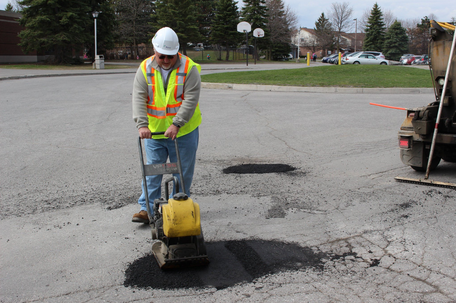
Key facts:
Operational approach:
Potholes are a result of the freeze/thaw weather cycles that deteriorate our road surfaces. During the freeze/thaw, water seeps into the crevices of the road. Fluctuations in temperature, vibrations and traffic volumes all create stress on the asphalt road surface, which can result in potholes.
This is explained in a video on the City’s YouTube channel.
- The City of Ottawa fills around 250,000 potholes per year.
- Potholes are caused by the constant freeze-thaw cycle in winter and spring.
- On average, we experience around 68 freeze-thaw cycles per winter season.
- Potholes are formed when snow and ice melts and seeps into cracks in the surface of the road, combined with the vibration of traffic over the cracks.
- During peak pothole season in late winter and early spring, around 35 crews are out patching potholes each day.
- The City of Ottawa maintains 6,000 km of roadway – the equivalent of a two-lane road from Halifax to Vancouver.
Operational approach:
- City staff proactively monitor the state of the roads to determine which areas need attention.
- Repairs are scheduled and carried out based on the severity of the pothole, traffic impact, and are based on a provincial minimum maintenance standard.
- Crews clear the pothole of water and debris, fill it with hot asphalt, and compact it to create a tight bond with the surrounding pavement.
- Patching potholes is a temporary fix designed to ensure the road is safe for cyclists and motorists until more permanent repairs can be done.
- The City regularly tests new approaches, technology and best practices to find the most effective way to deal with potholes in Ottawa.
- If you see a pothole, report it online at ottawa.ca or by calling 3-1-1.
Potholes are a result of the freeze/thaw weather cycles that deteriorate our road surfaces. During the freeze/thaw, water seeps into the crevices of the road. Fluctuations in temperature, vibrations and traffic volumes all create stress on the asphalt road surface, which can result in potholes.
This is explained in a video on the City’s YouTube channel.
Winter Maintenance
When Roads Get Plowed
Snow removal is based on a road-priority system, with high-use roads and emergency and transit routes cleared first.
When Sidewalks Get Cleared
After the last snowflake falls:
If your sidewalk has not been cleared 72 hours after the end of a snowfall, please call 3-1-1. The City does not clear snow from driveways or private sidewalks leading to a residence.
Clearing Snow From Your Property
A snow windrow is a pile of snow that accumulates at the end of driveways and on the sides of streets during plowing. It is the responsibility of the home owner to remove their own driveway windrows.
Garbage and Recycling Collection
Place garbage containers and bags and recycling bins at the curb. Do not place them behind or on top of snow banks.
Snow removal is based on a road-priority system, with high-use roads and emergency and transit routes cleared first.
- Major roads, arterials and major collector roads: Plows are deployed at the start of accumulation.
- After the last snowflake falls:
- Major roads, arterials and major collectors: Within four hours
Roads will not be bare pavement during a storm. - Minor collector roads: Within six hours
- Residential roads and lanes: Within 16 hours
- Major roads, arterials and major collectors: Within four hours
When Sidewalks Get Cleared
After the last snowflake falls:
- Sidewalks in the downtown core: Within 6 hours
- Downtown residential sidewalks: Within 12 hours
- Residential sidewalks: Within 16 hours
- Intersections and pedestrian crossings: Within 16 hours
- Bus stops: Within 24 hours after clean up
If your sidewalk has not been cleared 72 hours after the end of a snowfall, please call 3-1-1. The City does not clear snow from driveways or private sidewalks leading to a residence.
Clearing Snow From Your Property
- Do not push snow and ice on the street, sidewalk or park.
- Keep fire hydrants free of snow.
- Use wood, plastic or fibreglass driveway markers, which should be no larger than a hockey stick.
- Open catch basins or drains in front of your property when the weather becomes mild.
- Catch basins are identified by a yellow “T” bar painted on the roadway.
A snow windrow is a pile of snow that accumulates at the end of driveways and on the sides of streets during plowing. It is the responsibility of the home owner to remove their own driveway windrows.
Garbage and Recycling Collection
Place garbage containers and bags and recycling bins at the curb. Do not place them behind or on top of snow banks.
Winter Overnight Parking Bans
Between November 15 to April 1, there is no on-street parking between 1 a.m. and 7 a.m. when Environment Canada forecasts 7 cm or more of snow in the Ottawa area. This includes any forecast for a range of snow more than 7 cm, such as 5 to 10 cm.
Vehicles without a residential parking permit that are parked on the street during an overnight parking ban will be ticketed and towed.
When an overnight winter parking ban is made, the City issues a special advisory to the local media and posts it on ottawa.ca. The parking ban ends when snow clearing is completed and the City issues an advisory indicating that it has been lifted.
Sign up for notifications
Vehicles without a residential parking permit that are parked on the street during an overnight parking ban will be ticketed and towed.
When an overnight winter parking ban is made, the City issues a special advisory to the local media and posts it on ottawa.ca. The parking ban ends when snow clearing is completed and the City issues an advisory indicating that it has been lifted.
Sign up for notifications
How Roads Are Cleared
How Roads Are Cleared
After a severe snow storm, operators may have to plow a street twice. Sometimes a grader or dump truck with front and wing plows will do a first pass, followed by a sand/salt truck, to clear a small amount of snow and make sanding/salting more effective.
To clear a cul-de-sac, operators will push the remaining snow to the centre or outside of the street, depending on the available area.
In the early winter, the City removes ruts that have formed on snow-packed surfaces. This keeps catch basis open and helps prevent flooding.
Salt and Sand
The City applies dry salt, wet salt, sand salt mix, liquid brine and abrasive materials on streets. Salt is spread early during a snowstorm to make a brine solution that prevents the ice from sticking to the asphalt.
To minimize salt use, rock salt is sprayed with a liquid de-icer as it is spread. This speeds up ice melting by making the salt sticky so it can adhere to the road.
Anti-icing is used before or at the beginning of freezing rain or other winter precipitation. The de-icing solution consists of pre-wetted salt or a liquid solution. It is applied to the Transitway and Highway 174 to prevent ice from forming and bonding to the pavement.
Abrasive materials such as sand are used to increase traction in colder temperatures when salt is not effective.
Snow Removal and Disposal
The City aims to distribute snow on both sides of the road. Snow banks are removed or reduced in size when they begin to restrict sightlines, travel widths, and pedestrian and cycling traffic. Snow banks that restrict sightlines at intersections and at pedestrian, school and railway crossings are removed within 24 hours after crews are made aware of the situation. If weather permits, snow banks are pushed back to curbs to provide more driving width on the roads and to make space to store snow.
The City’s snow disposal facilities do not accept snow from private operators. To find private snow disposal facilities, consult the Yellow Pages, Greater Ottawa Truckers Association or Ottawa Construction Association.
Flood Control
If the temperature rises above zero degrees Celsius in a short period of time, flooding can occur. The City maintains drainage systems to reduce potential flooding conditions. City crews remove snow and ice from catch basins on roads and sidewalks to ensure melting snow drains when required. It is normal for water to pool around a catch basin in wet weather. Roads are designed to drain based on the sewer capacity. Roadside ditches are cleared at the outlet end of the ditch system to provide drainage for the spring melt.
After a severe snow storm, operators may have to plow a street twice. Sometimes a grader or dump truck with front and wing plows will do a first pass, followed by a sand/salt truck, to clear a small amount of snow and make sanding/salting more effective.
To clear a cul-de-sac, operators will push the remaining snow to the centre or outside of the street, depending on the available area.
In the early winter, the City removes ruts that have formed on snow-packed surfaces. This keeps catch basis open and helps prevent flooding.
Salt and Sand
The City applies dry salt, wet salt, sand salt mix, liquid brine and abrasive materials on streets. Salt is spread early during a snowstorm to make a brine solution that prevents the ice from sticking to the asphalt.
To minimize salt use, rock salt is sprayed with a liquid de-icer as it is spread. This speeds up ice melting by making the salt sticky so it can adhere to the road.
Anti-icing is used before or at the beginning of freezing rain or other winter precipitation. The de-icing solution consists of pre-wetted salt or a liquid solution. It is applied to the Transitway and Highway 174 to prevent ice from forming and bonding to the pavement.
Abrasive materials such as sand are used to increase traction in colder temperatures when salt is not effective.
Snow Removal and Disposal
The City aims to distribute snow on both sides of the road. Snow banks are removed or reduced in size when they begin to restrict sightlines, travel widths, and pedestrian and cycling traffic. Snow banks that restrict sightlines at intersections and at pedestrian, school and railway crossings are removed within 24 hours after crews are made aware of the situation. If weather permits, snow banks are pushed back to curbs to provide more driving width on the roads and to make space to store snow.
The City’s snow disposal facilities do not accept snow from private operators. To find private snow disposal facilities, consult the Yellow Pages, Greater Ottawa Truckers Association or Ottawa Construction Association.
Flood Control
If the temperature rises above zero degrees Celsius in a short period of time, flooding can occur. The City maintains drainage systems to reduce potential flooding conditions. City crews remove snow and ice from catch basins on roads and sidewalks to ensure melting snow drains when required. It is normal for water to pool around a catch basin in wet weather. Roads are designed to drain based on the sewer capacity. Roadside ditches are cleared at the outlet end of the ditch system to provide drainage for the spring melt.
Ice Thickness: Do You Know What is Safe?
With recent cold temperatures, rivers, lakes and the Rideau Canal have begun to freeze, but looks can be deceiving. What ice thickness is safe?
Here’s what you need to know before going out onto the ice:
According to the Canadian Red Cross, many factors affect ice thickness including: type of water, location, the time of year and other environmental factors such as:
As a guideline, clear blue ice is usually the strongest; white opaque or snow ice is half as strong as blue ice. Grey ice is unsafe; it indicates the presence of water.
When in doubt, simply stay off the ice.
More ice safety tips are available from the Canadian Red Cross or the National Capital Commission.
Here’s what you need to know before going out onto the ice:
- Minimum or at least 15 cm for walking or skating alone
- 20 cm for skating parties or games
- 25 cm for snowmobiles
- 35 cm for fishing huts
According to the Canadian Red Cross, many factors affect ice thickness including: type of water, location, the time of year and other environmental factors such as:
- Water depth and size of body of water
- Currents, tides and other moving water
- Fluctuations in water levels
- Changing air temperature
As a guideline, clear blue ice is usually the strongest; white opaque or snow ice is half as strong as blue ice. Grey ice is unsafe; it indicates the presence of water.
When in doubt, simply stay off the ice.
More ice safety tips are available from the Canadian Red Cross or the National Capital Commission.
Transportation Master Plan
In 2013, the City of Ottawa completed a Transportation Master Plan which outlines the future development of the road network. This Plan is an aid for residents to foresee the shape of their community in the years to come.
Below is a link to the 2013 Transportation Master Plan for the City of Ottawa.
2013_transportation_master_plan.pdf
Below is a link to the 2013 Transportation Master Plan for the City of Ottawa.
2013_transportation_master_plan.pdf

